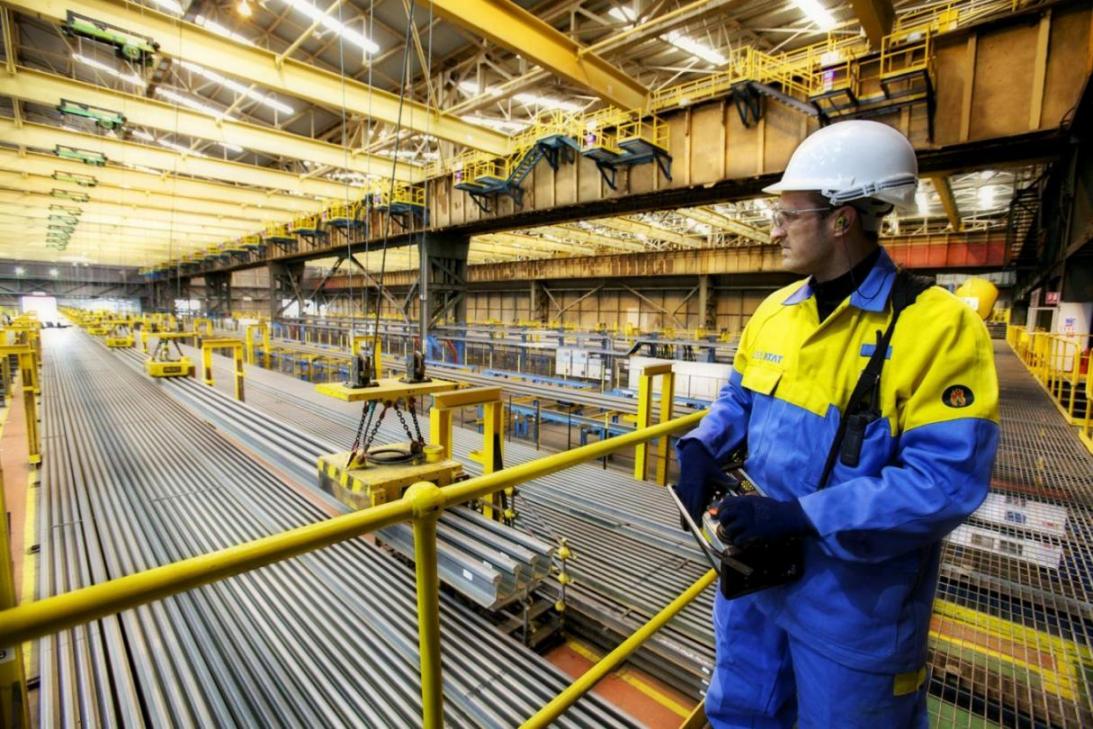It is tough to find a bright spot in the global steel sector, as prices plunge and struggling Chinese producers flood world markets with their surplus stock. But if pressed, gloomy industry-watchers see at least some reason for optimism in Asia’s second-largest emerging market, India.
“There is really only one location that has the long-term potential to pull the global steel market out of its current slump, and that is India,” says Edwin Basson, director-general of the World Steel Association, a trade group. “But, and this is the big question, while India has huge unfilled demand and a big economy, when will all this be felt?”
India is already the world’s fourth-largest steel producer and is expected to overtake the US for third place in the next year or two. And while its steel consumption is barely a tenth that of the world’s largest user, China, it is at least expanding. Growth will be 8% next year, according to Fitch, the ratings agency, Yahoo reported.
India is adding capacity too, led by its big three producers: Tata Steel, JSW Steel, and state-backed Steel Authority of India. Last month, Tata Steel inaugurated a huge new plant in the eastern state of Orissa, which eventually will nearly double its output.
Tata Steel in many ways exemplifies India’s unusual place in world steel markets. The company’s loss-making European arm has been hammered by cheap imports and flat demand over recent years. It is now moving toward selling off part of its ailing UK division, having announced 1,200 job losses in October. The group’s Indian arm is much smaller, producing just a third of its output, but performs far better, last year contributing 80% of the group's underlying profits.
Market Havoc
Nevertheless, India’s steel producers are downbeat for two main reasons, the first being China. In common with their global counterparts, most have been hit badly as Chinese competitors send excess capacity abroad. Indian steel imports soared 72% in the financial year to March 2015, and have risen further still this year.
Steelmakers are livid. Chinese exports have “caused havoc”, says billionaire tycoon Sajjan Jindal of JSW, India’s second-largest private sector steelmaker by revenue. Domestic steel appetite might be growing, he says, but local production is stagnant because imports mop up any increases in demand.
India’s government responded in August by increasing taxes and import duties on a range of steel products, curbing inflows somewhat. But Jindal and his fellow industrialists have been pushing for more, and this month policymakers in New Delhi introduced a series of further minor anti-dumping duties.
Debts Soar
The second problem is poor finances. Indian steelmakers borrowed heavily to add capacity during the country’s mid-2000s boom years. Industry-wide net debt soared 10-fold over the last decade as a result, hitting roughly $50 billion this year, according to Credit Suisse.
All that borrowing pushed capacity up by a third, with an extra 15 million tons added during this financial year alone, according to Fitch analyst Muralidharan Ramakrishnan. But it also came amid a plunge in global iron ore prices, under-cutting the cost advantage that Indian producers often enjoyed by mining cheap domestic ore, a key component in steelmaking, and hitting profitability.
Many Indian steel projects also ran into regulatory difficulties, leaving once fast-growing groups like Mumbai-based Essar Steel struggling to pay down debts. A host of smaller companies are effectively bankrupt. Bureaucratic problems hit foreign producers too, notably South Korea’s Posco, which has mothballed a $12 billion facility in the country. ArcelorMittal, the world’s largest steel group by revenue, scrapped a big plant two years back.
India is not going to be able to replace China as global steel’s locomotive any time soon, says Kaushik Chatterjee, finance director of Tata Steel, but a mix of protection against unfair imports and fresh government spending can at least spark a new period of growth.
“The biggest trend which can come is more public spending on infrastructure,” he says. “If we get that, the future will look much better.”


